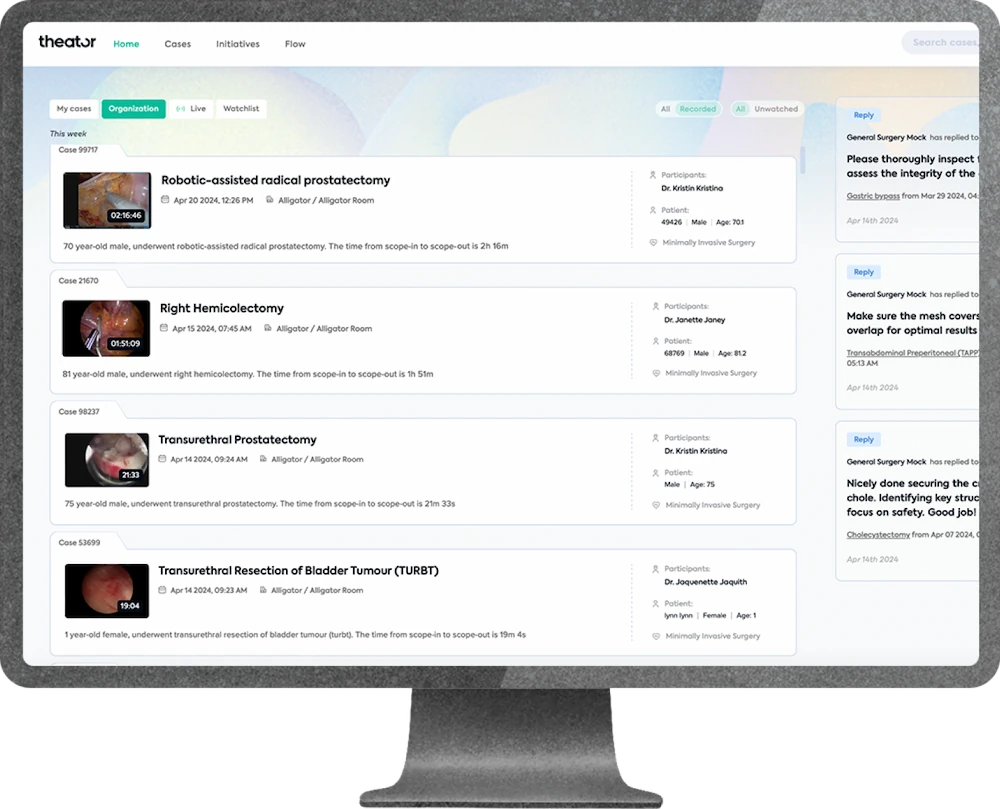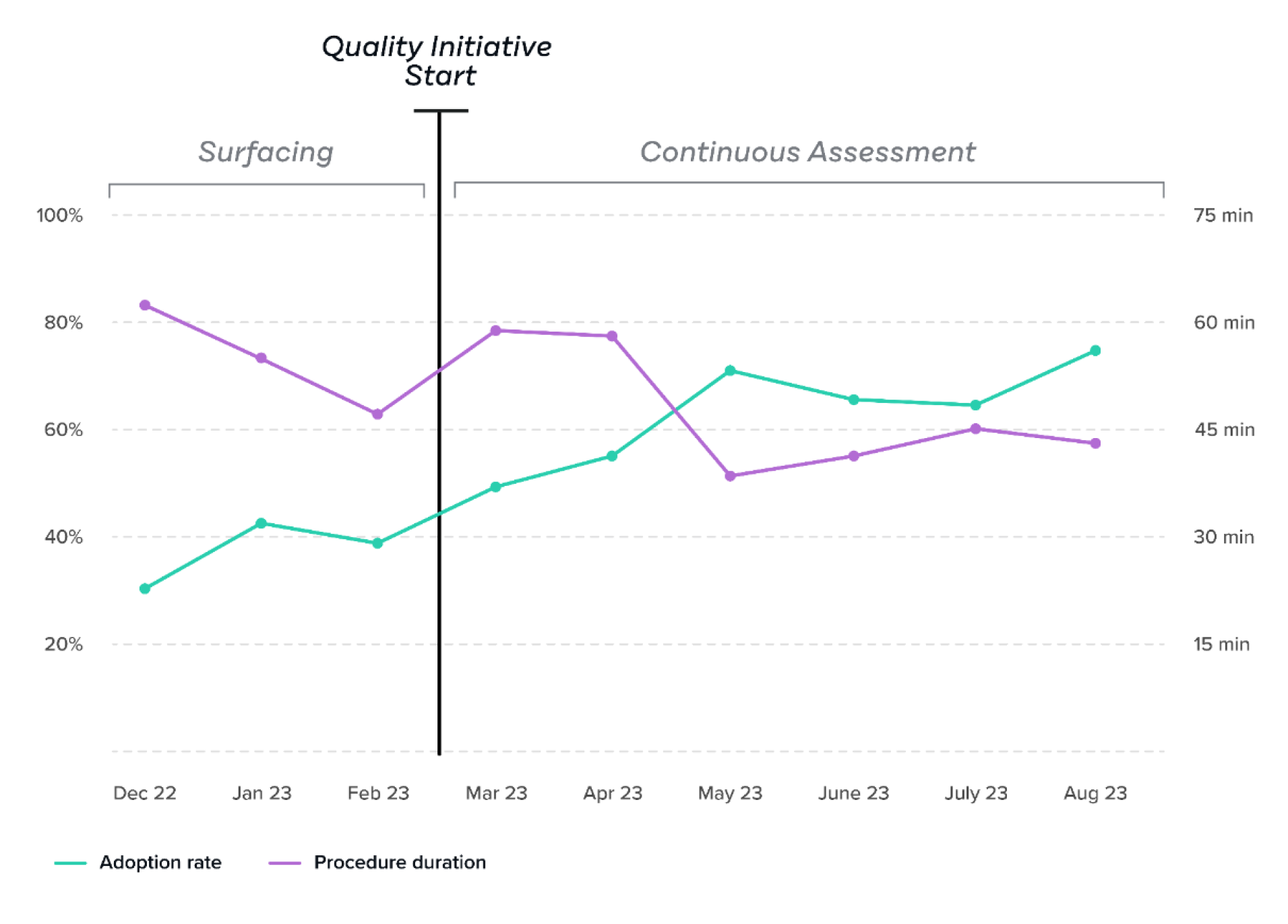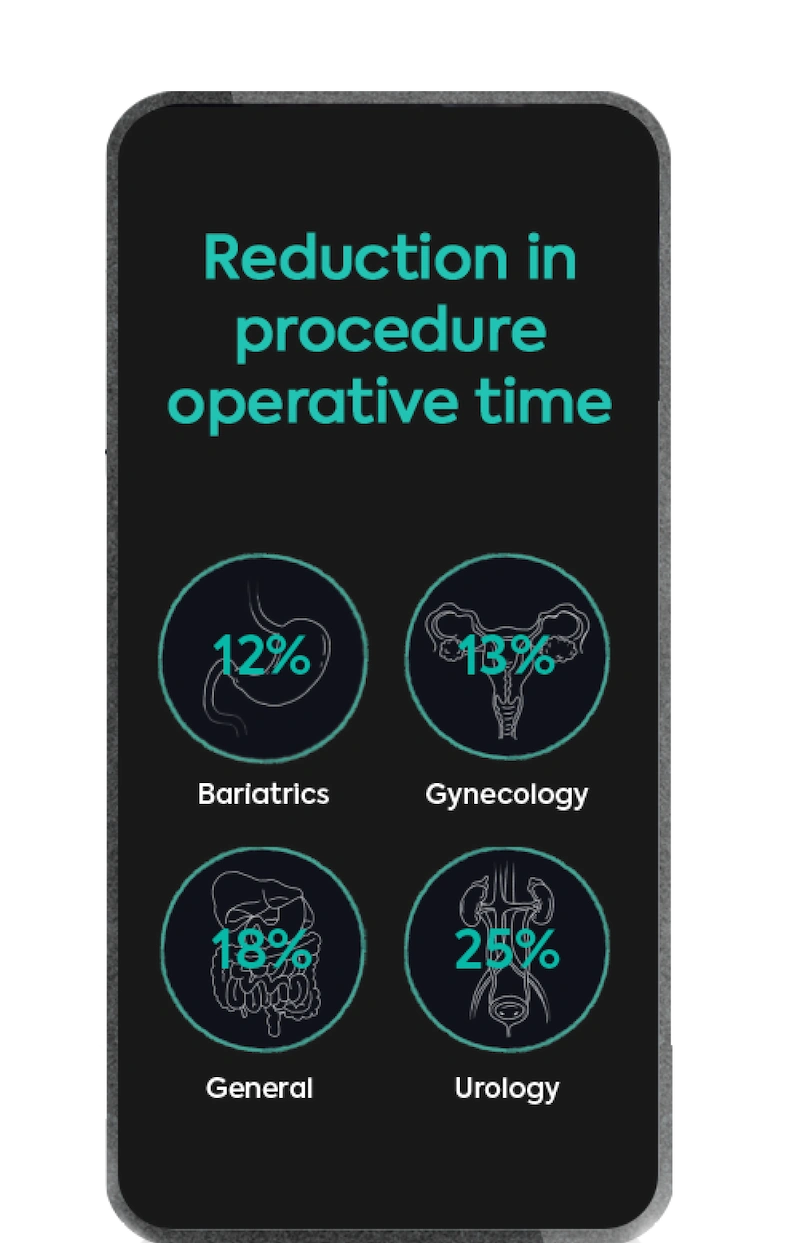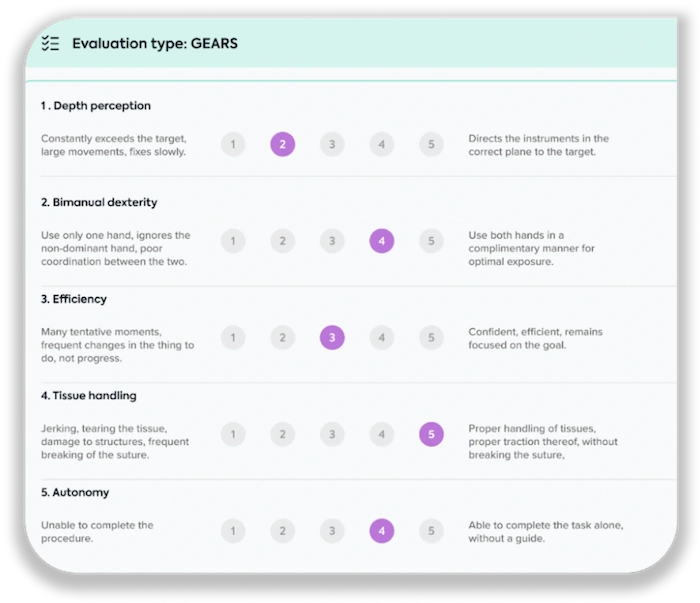Capture and annotate all of your lap and robotic video, securely stored in the cloud.
Connect video to patient outcomes to surface proactive quality initiatives.
Optimize resources and reduce procedure time through standardization.
Accelerate training with built-in assessments, and peer-to-peer collaboration.

There is a lot we can learn from surgical videos alone, especially when automatically captured and structured – making sense of the data. How often are surgical practices adopted? Is there variability by complexity, by technique, and within healthcare systems? You bet. Check out Theator’s Spotlight data to get our unique insights.
Do specific techniques, surgical practices, or tools impact outcomes? They sure do. One gynecology department drove a 56% increase in safety milestone adoption while achieving a 13% decrease in operative time.




We’ve seen time and time again that driving standardization intraoperatively decreases operative time, by 12%, 13%, 19%, 25% in specific procedures and counting.
When a patient experiences a complication, surgical teams immediately turn to the video. Read how one surgical team was able to intervene early and treat the patient by reviewing the recorded video immediately postoperatively.


